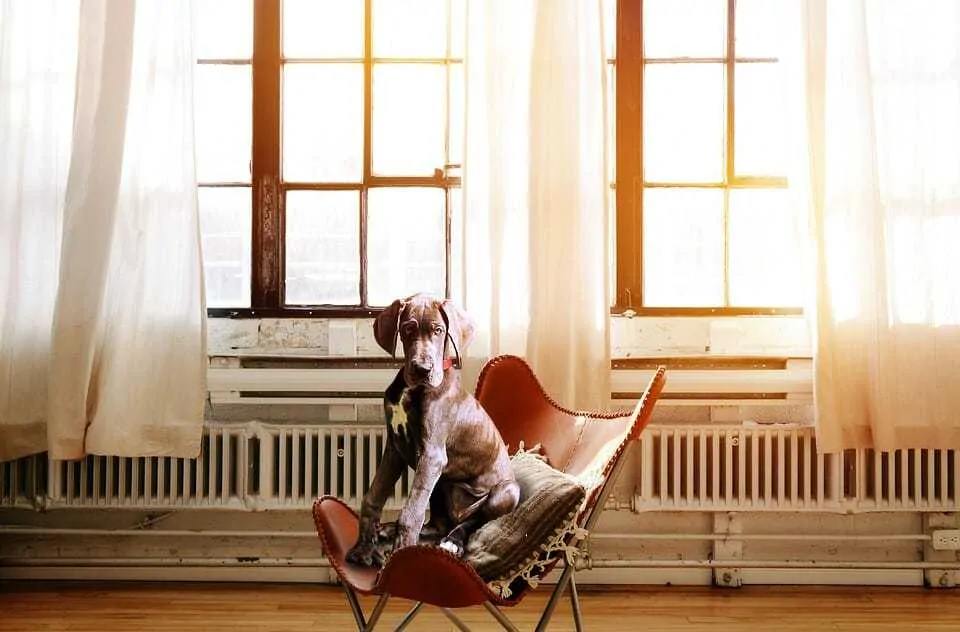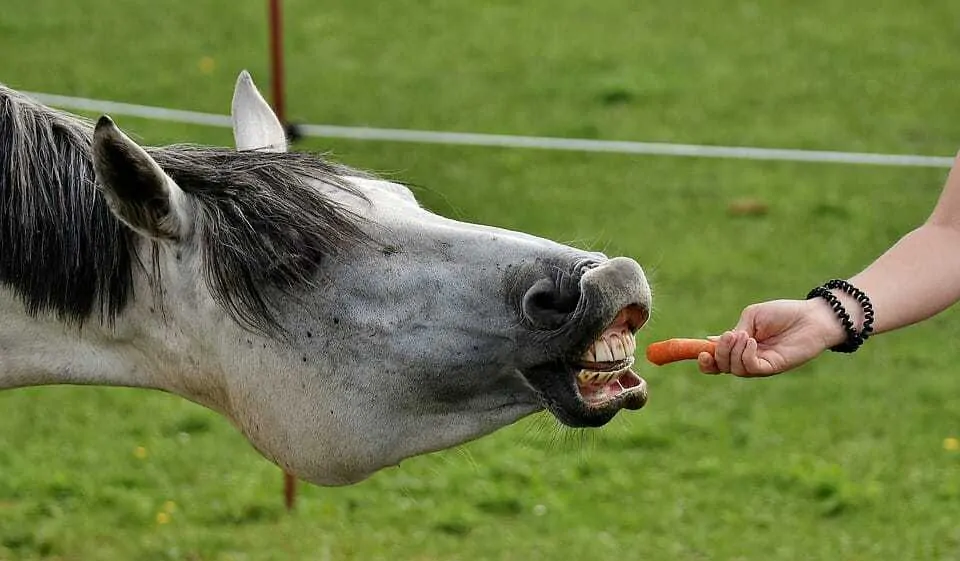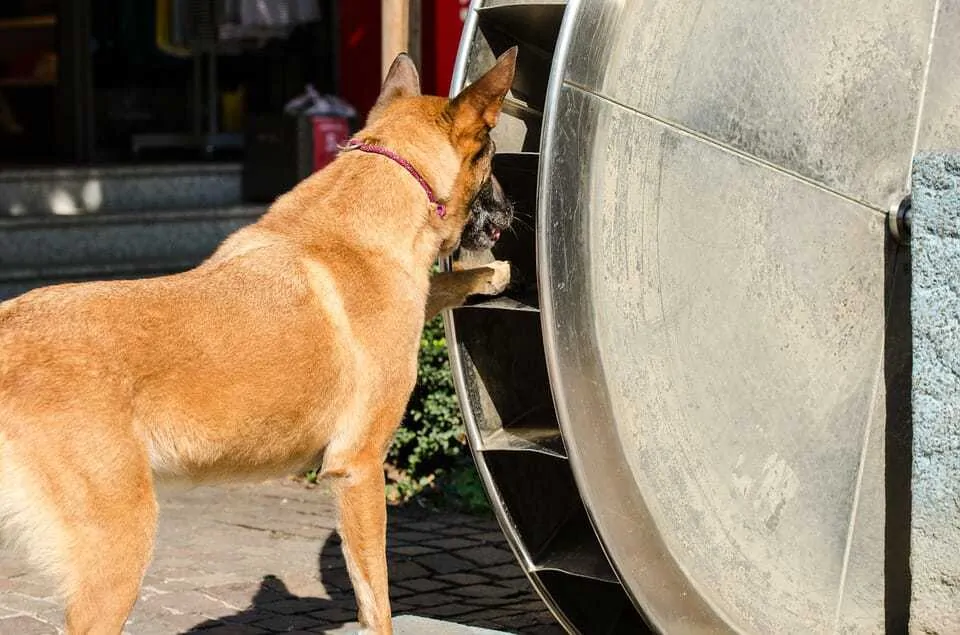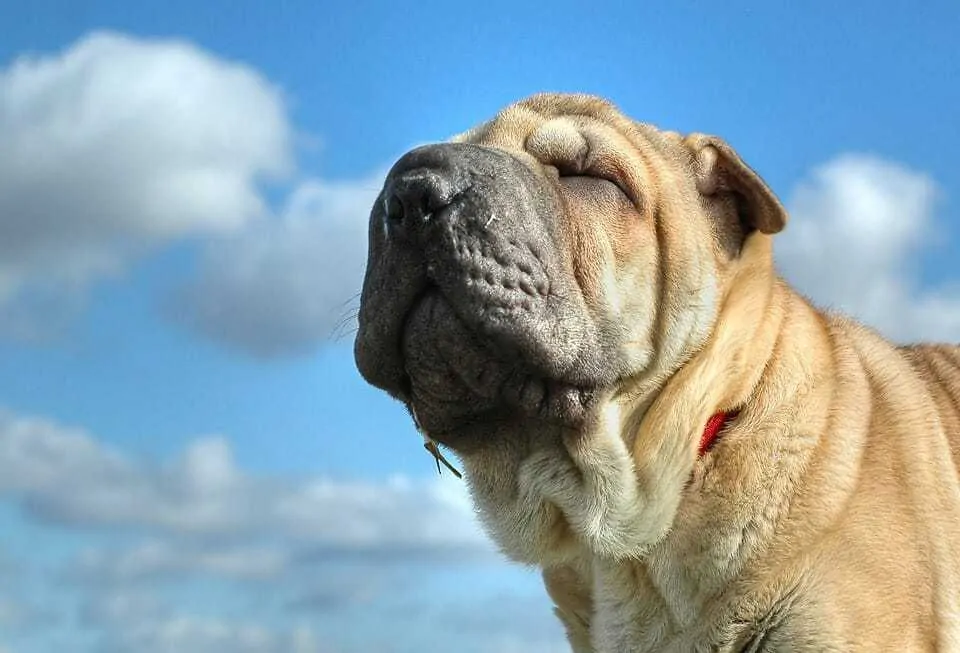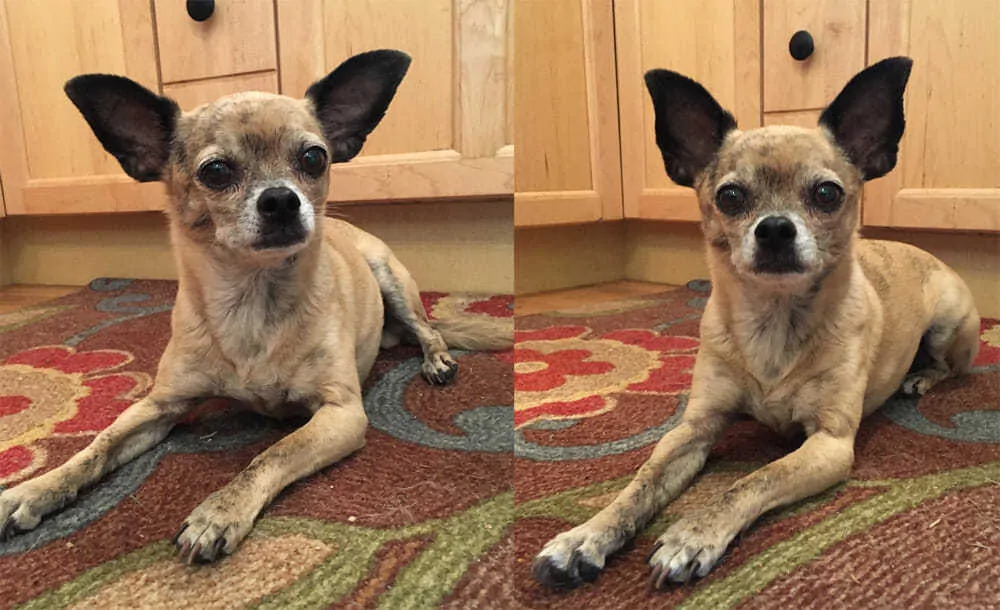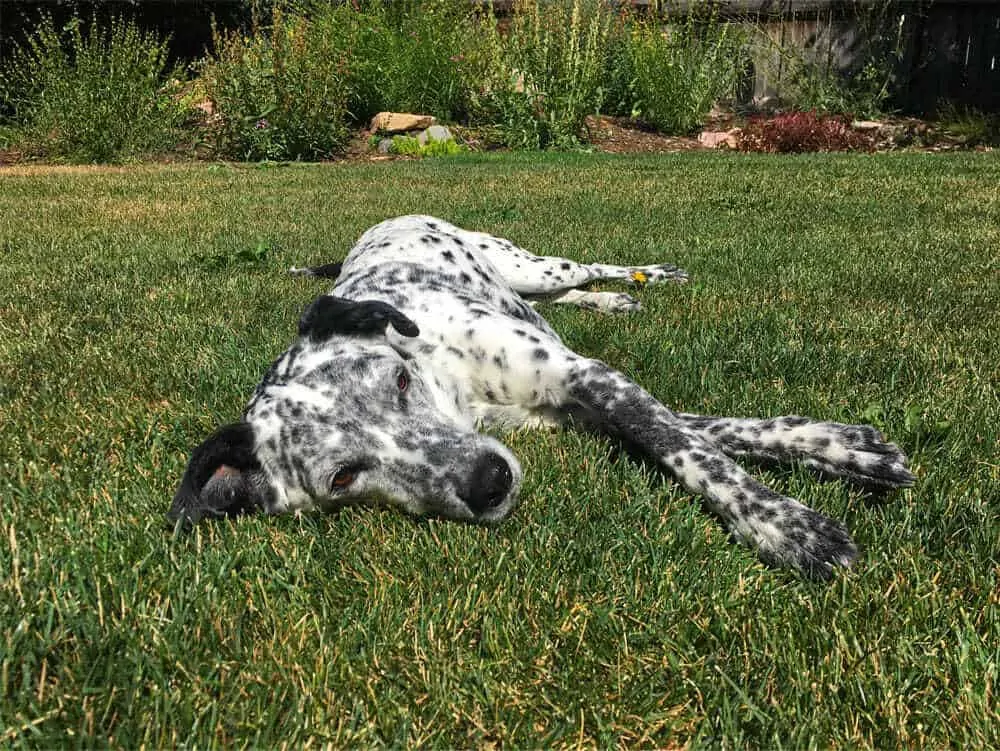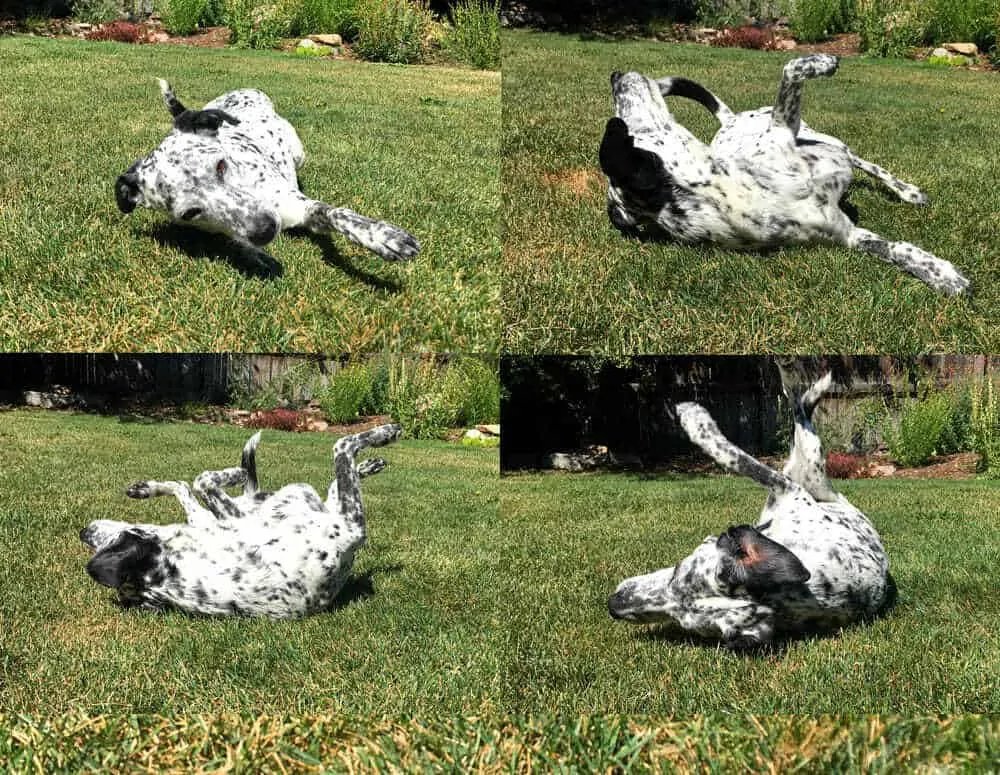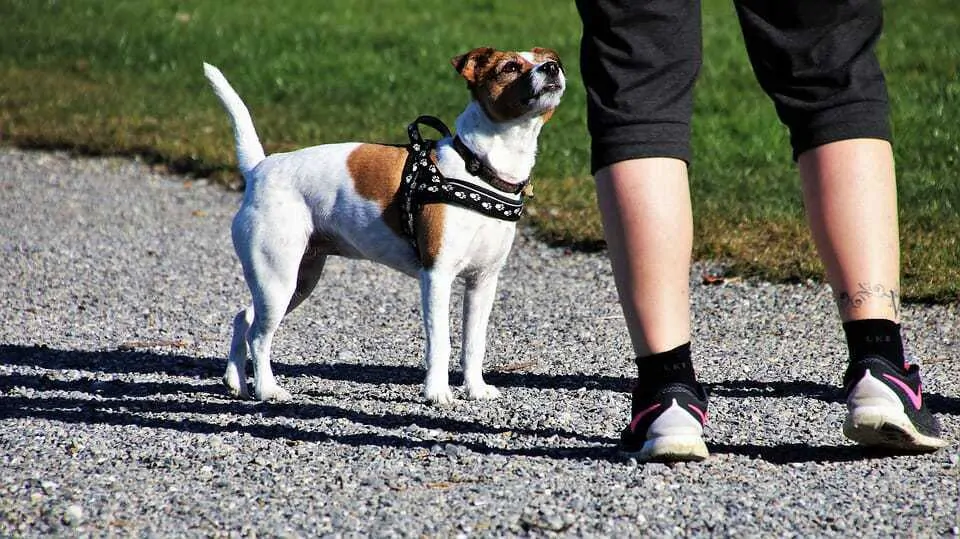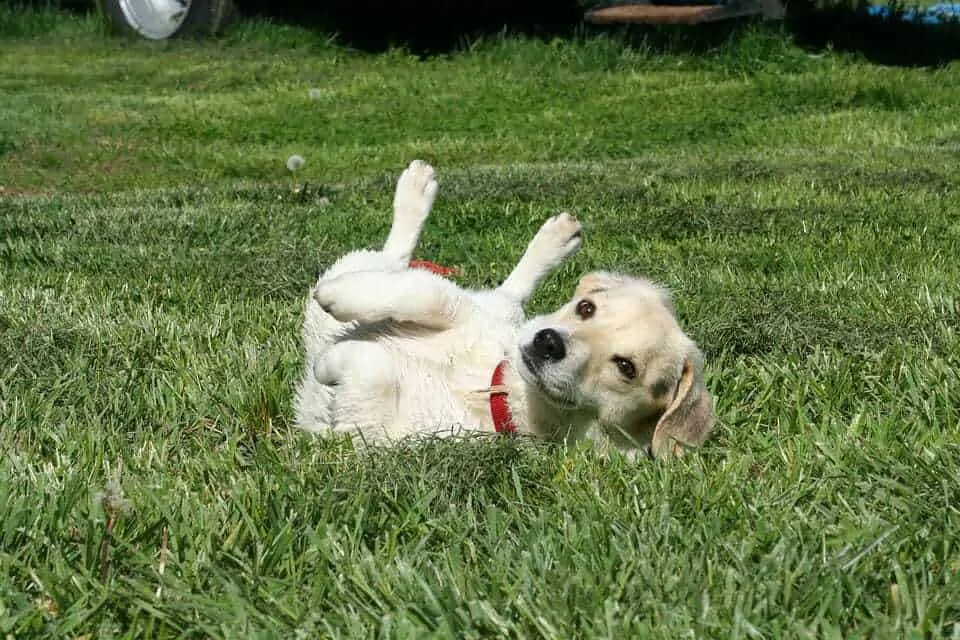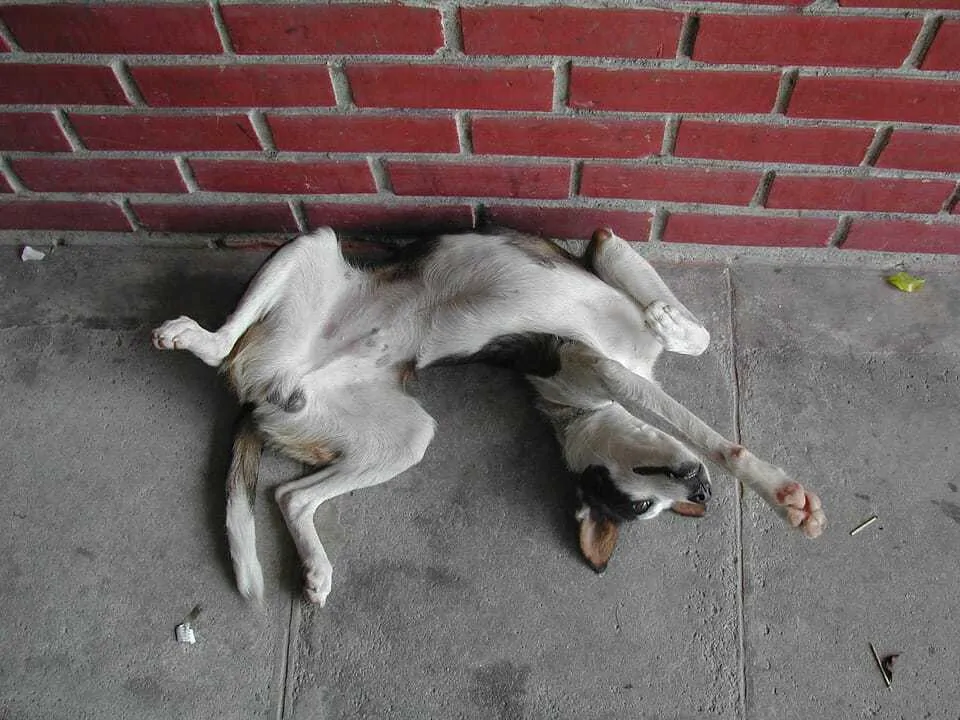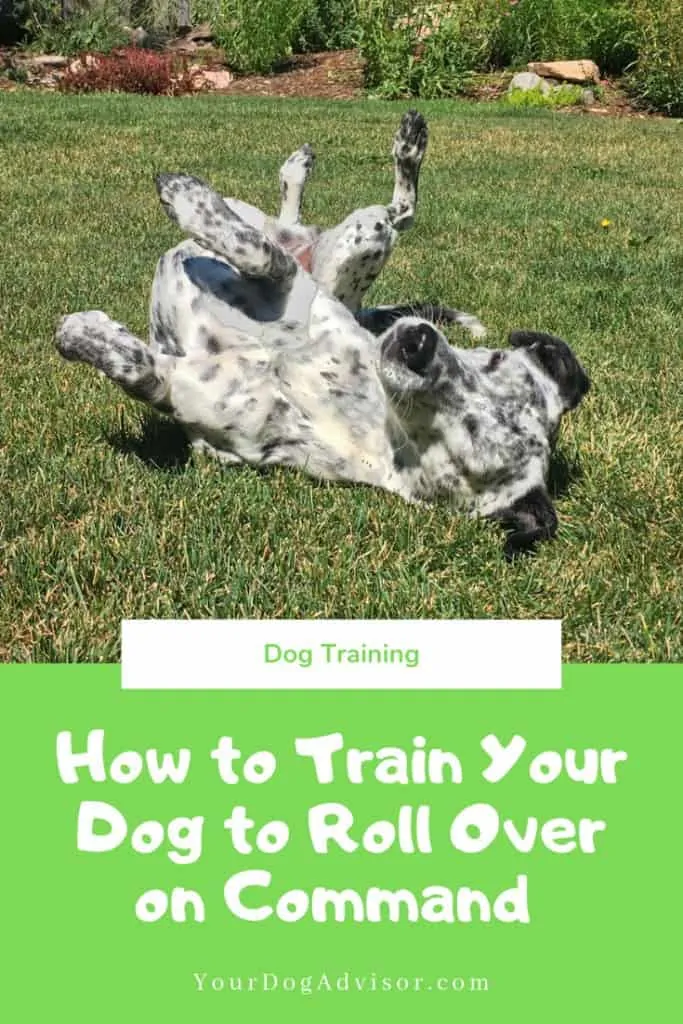Roll over is a classic doggy trick that serves little function but to entertain adoring owners. But don’t let the cuteness of this command trick you into thinking its an easy one to train.
Roll over is a complex command, meaning it takes multiple steps for your dog to understand what the full behavior looks like. And then even more steps to train them to do it based on a single cue. But that doesn’t mean your pooch can’t master the roll over. With a little dedication, some creativity, and an understanding of different trick training methods, you’ll have your dog rolling across the floor in no time.
Contents
Teaching Complex Behaviors
Remember back to your dog’s first days of training. The first command you probably ever taught them was sit. While every new command is a struggle for a young puppy or a new dog who isn’t familiar with listening to their human counterparts, sit is one of the most straight forward commands a dog will learn.
It involves only one movement: dropping their bum to the floor. On the opposite end of the trick training spectrum are more complex behaviors. Ones that require multiple movements to complete the trick. Roll over, for instance, requires your dog to lay down, drop to their side, roll onto their back, roll onto their other side, and then get up again.
If you try to teach this complex behavior as one fluid movement, your dog will probably give up before they learn the trick. Instead, you have to break the behavior up, rewarding each piece and then building on it as your dog understands what is being reinforced.
Teaching your dog to sit is fairly straightforward. But teaching your dog to run over and sit in a chair on command takes an understanding of more complex training techniques.
But how do you get your dog to perform these behaviors, in full or in part?
For the majority of complex behavior training, you are going to use a combination of luring and shaping. For very specialized behaviors or for dogs that struggle with luring, you may even have to resort to catching. Understanding how to use each of these techniques properly is key to training your dog any multi-stage trick.
Luring
Luring is probably something you’re already familiar with, even if you didn’t realize it. This is simply the act of manipulating your dog’s movements by enticing them to follow a treat or toy. The easiest way to teach your dog to sit is to place a treat in front of their nose and move it up slowly, which causes their rump to drop to the floor as they try to follow the treat with their nose.
This is luring. And this same technique can be used to get your dog to move in all sorts of interesting ways. You can use it to train anything from a leashless heel to running through weave poles on an agility course.
But the key with luring, no matter the trick, is to do it in short bursts. If you try to lure your dog through the entire stand of weave poles the first time around, your dog is going to lose interest in following the treat before you finish. Instead, you need to lure them through one set of poles and then reward them. Once they understand that piece of the behavior, then you can lure them through one set of poles and back through the next. And then reward them for that.
By building up pieces of the behavior in this way, you keep your dog interested. And the more frequent rewards keep their confidence up so they’ll keep trying to finish the behavior, no matter how complex.
Like a horse following a carrot, luring involves using an enticing treat or toy to get your dog to move in a certain way.
A similar technique to luring is targeting. To use targeting to teach your dog new behaviors, you first have to teach them to touch your hand or a target stick with their nose. You can then use your hand or target stick to manipulate their movements just as you would with a treat lure. One benefit of targeting is you can teach your dog to touch your hand or the stick with different parts of their body, like their paw, or even their hip. This makes it even easier to get them to move in the way that you need.
Shaping
Shaping is another useful training technique, especially for complex behaviors. Shaping often comes into play after you have set up the basic behavior using luring or targeting. Once your dog will perform an approximation of a trick, you can shape it into what you want by selectively rewarding the attempts that most closely resemble the final product.
For instance, if I want my dog to wave, I would use targeting to get my dog to lift her paw when I raise my hand. At first, that behavior will be very brief: she’ll lift her paw quickly to swat at my hand and then set it back down. Once she is consistently lifting the paw when I give the cue, then I will start shaping it by only rewarding her for lifts that last one full second. Once she is consistently offering one-second lifts, then I will only reward her for lifts that last two seconds. Then I will only reward two-second lifts that are higher than six inches. Then higher than eight inches.
By selectively rewarding closer and closer approximations, I can shape a rough behavior into a polished trick.
Shaping requires you to pay extra close attention as a trainer. You need to be quick to mark any change in behavior, no matter how small, that is a closer approximation of the final behavior you are wanting to train.
Catching
If you’re trying to train your dog to perform a behavior on command, that you can neither lure nor shape into existence, then you’ll have to rely on catching.
One of the best examples of a behavior you have to teach by catching is training your dog to sneeze on cue. To do this, you would simply wait for your dog to sneeze, and then flood him with praise and treats. After rewarding the behavior when your pet does it naturally, you are increasing the likelihood they’ll do it again.
Now, it will take multiple reps before your dog realizes why they are being rewarded. And maybe even longer for them to use the behavior to actively try to get a reward. But eventually, your dog will start offering a sneeze in exchange for a treat. Once this happens, all you have to do is pair it with a cue and continue to reinforce them for doing it.
Teaching your dog to do a natural behavior on cue, such as sneezing or blinking, takes time to train since it can take time to catch the behavior while it happens. Marking a blink is harder than it sounds (and much harder than catching one on camera)!
Obviously, catching can be a time-consuming way to train a trick. But, it may be the only way to get your dog to perform certain behaviors on cue. Some dogs are reluctant to be lured. I’ve come across this phenomenon multiple times when trying to train small dogs how to down on command. In cases like these, catching may be the easiest (and the quickest, believe it or not) way to get results.
>>>Enjoy teaching your dog fun new behaviors? Check out these 8 brilliant commands.
Before You Get Started
Now that you understand the different techniques that go into training a complex behavior like roll over, you are almost ready to get started. But, if your dog doesn’t know how to down consistently on cue, you’ll want to start by teaching or brushing up on that behavior first.
It is possible to lure your dog into a down position and then lure them over onto their side but it adds unnecessary complexity to an already complex trick. Plus, by teaching your dog to lay down first, you’ll have an opportunity to practice your luring skills.
How to Teach Your Dog to Roll Over
Find a quiet space in your house with enough room on the floor for your dog to roll around. You’ll be spending a lot of time on the floor too, so a comfy rug or carpet is a big plus. Load your treat bag with plenty of high-value treats.
You’ll need to use a positive marker to let your dog know when they have moved in the correct way. If your dog is clicker trained, you can use your clicker for this. If not, you can just use a verbal marker like “yes!” or “good dog!”
If your dog is familiar with trick training, you’ll probably be able to train this behavior in one session. If they aren’t familiar or are easily distracted, it may take three or four sessions. If your dog doesn’t easily lure, it may require you to use the catching technique, which could even take weeks! In any case, be patient and move at your dog’s pace.
Step 1: Lure into a side lay
Start by asking your dog to down. Once they are laying, check the position of their rear legs. If they are “lazy laying” you’ll see one leg kicked out to the side of their body. In this case, you’ll need to lure them to roll onto the opposite side. If they are in an upright down with each rear leg folded at their side, then you can lure to either side.
The image on the left shows a dog in a “lazy down.” It would be very difficult for this dog to roll to his left. The image on the right shows a dog in a normal down who can easily roll to either side.
Take a treat in your dominant hand and put it up to your dog’s nose. They can lick at it, but don’t let them get it. Slowly move your hand around toward the side of their ribcage. If you want your dog to roll to the left, you’ll move your hand to the right and vice versa.
Your dog’s nose should follow your hand until their neck is bent all the way around. At this point, move your hand up toward their spine slightly. This should cause your dog to fall onto their side. The moment their side hits the ground, use your positive marker, give your dog the treat, and praise them.
TIP: If your dog struggles to follow your lure, try moving slower or keeping your hand farther from their body as you move it back. If they still struggle, try a higher value treat. You may also have to play with the positioning to get your dog to roll onto their side. Don’t be afraid to get creative.
>>>If your dog struggles during training, you may be making one of these common training mistakes.
After you reward your dog, entice them into a stand then ask them to down again and repeat the process. Lure your dog onto the same side you did during the first rep. If your dog “lazy downs” with their legs on the side they need to roll to, get them up and ask for a down again. You may even have to lure them to get them to fold their legs back under themselves.
Continue luring your dog onto their side until they easily plop over without having to follow the full lure.
Keep practicing luring your dog onto their side until they will easily move into the position without having to follow your lure. If they move into the position faster than your hand moves, this is a good indication they are ready for the next step.
Step 2: Lure onto the back
Once your dog seems to understand that they are being rewarded for moving onto their side, we are going to start asking them to do a little more before they are rewarded.
Put your dog in a down and then lure them onto their side as you did before. Then keep luring them to move onto their back by moving the treat from the center of their ribs toward their back. Keep your hand and the treat parallel with the ground as you move it.
TIP: Make sure to move your hand slowly so your dog’s nose stays with it. If your dog flips their head around and rolls back onto their stomach, you’ll have to adjust your lure. Try moving your hand higher up so they can follow it easier with their nose. Or move your hand closer to their head so their neck isn’t bent as far.
Adjust your lure as needed to coax your dog to roll onto their back. Once they do, use your positive marker and reward them.
Repeat the above process until your dog will easily move from a down onto their back.
If your dog happens to roll off their back by completing a full roll over give them extra praise and an additional reward. If they only roll off their back the direction they came, that’s fine too. We’ll focus on getting them to roll the opposite way in the next step.
By breaking the roll over into steps and then building them on top of each other one at a time, you can create a more polished end behavior.
Step 3: Lure onto opposite side
Start with your dog in a down and lure them onto their back as you did before. This time, do not give them the treat once they are on their back.
Instead, continue to lure them to flop onto their opposite side by moving your hand from directly above their nose in an arch toward the ground. Wait until your dog’s entire side, not just their head, turns and rolls onto the floor.
Once their side hits the floor, use your positive marker and reward them.
Repeat this full process until your dog will easily move from a down and roll all the way on to their opposite side.
In this video, you’ll see how to start training the roll over command by luring your dog onto their side, then their back, and finally over onto their opposite side.
Step 4: Reduce the lure
Eventually, you’ll want your dog to be able to perform a roll over just by you saying the cue. But to get to this point, you first have to wean your dog off the lures you used to build the behavior.
The first thing we are going to do is get rid of the extra down command. With your dog standing in front of you, lure them into a down. Because you have been doing the same sequence of behaviors for multiple reps now, they should easily plop into a down without much luring.
Then start your lure to get them to roll as you did before. But this time, once your dog is on their back and starting to roll onto the opposite side, stop luring and stand up. Your dog should complete the roll and jump up looking for their treat. Mark the behavior and reward them.
TIP: If your dog rolls back the opposite way and gets up, don’t reward them. Try the above steps again, but this time lure them a little farther onto their opposite side before getting up. If they are already moving in that direction before you stop luring, they should have no problem finishing the roll on their own.
Repeat that sequence a until your dog completes the behavior correctly multiple times in a row. Then, lure them through down and onto their side again, but this time stop luring and stand up as your dog is moving from their side onto their back.
If they complete the roll, reward them. If not, lure a little farther before standing up and then work to reduce that lure with each rep.
As you reduce your lures, keep in mind that your dog has been watching more than your hands for cues of what to do. How you lean down, kneel, or sit also needs to be reduced incrementally. If you go from sitting while teaching roll over to suddenly standing, your dog is likely to get confused.
By only rewarding your dog when they complete the full roll, you are shaping the behavior into a polished trick. Using the shaping technique helps you get rid of your lure.
>>>Enjoy the challenge of shaping behaviors? You’ll love teaching your dog the place command.
Step 5: Introduce the cue
Once your dog will easily roll over when lured into a down and onto their side, you are ready to add a cue.
We’ll call this behavior “roll over” but you can name it whatever you would like. Just keep the cue consistent. We’ll also build a hand cue for this command out of our remaining lure, but for now, we will focus on the verbal cue.
This time, before you lure your dog into a down, say “roll over!” in an excited tone. Lure your dog only as much as needed and then praise and reward them once they complete the roll.
Repeat this process over and over. We want our dogs to learn to associate the word “roll over” with the behavior they have been doing. Associations like this take time to build, so be sure to do a couple dozen reps with the new cue before moving on.
In an attempt to get their reward faster, your dog might try to roll onto their back then quickly flip back the same way and jump up. Make sure you only reward them for completing the full roll.
Step 6: Remove remaining lures
Once your dog has made an association between rolling over and the word “roll over” then you are ready to get rid of the remaining lures.
This can be tough for many dogs, especially if you’ve moved too fast through any of the previous steps. If your dog gets confused and stops performing the roll at any point, back up a few steps and try again.
With your dog standing in front of you, say “roll over” and move your hand with a treat quickly from their nose toward the ground. But this time, only bend over yourself, don’t kneel. Once your dog has downed, quickly move your hand in a large circle near their head in a less exaggerated lure than what you were doing before.
If your dog completes the roll over, praise and reward them. If not, try again but move more slowly.
During the next rep, repeat the same process, but this time do not hold a treat in your hand. Your hand will still be used to guide your dog in the right direction, but they’ll be following it for guidance, not to try to get a treat.
Repeat this process until you have a few successes in a row.
From that point, continue making your lures less exaggerated and using only an empty hand. In addition to reducing your hand movements, you also need to bend over less and less each time.
Work at this until you are able to give your roll over command, make a small circle in the air with you hand while standing up straight, and have your dog perform the full roll over.
In this video, you’ll see how to reduce your lures, introduce a verbal cue, and transform your remaining lures into a simple hand cue.
Troubleshooting the Roll Over Command
As I mentioned above, luring doesn’t work for all dogs. If your dog struggles to follow the lure, and upping the value of the treats doesn’t work, you may have to try a different technique.
Catching the behavior and reinforcing your dog for doing it is the next best approach. But this doesn’t mean you have to wait around all day for your dog to happen to roll over. You can try different things to increase the odds that your dog will roll over on their own.
For instance, many dogs like to roll on their backs on the grass or after swimming or getting back from a long walk. Consider when your dog typically rolls and try to create that situation. Once your dog rolls onto their back, use your positive marker and reward them. Repeat the process as many times as your can.
>>>Rolling in the grass isn’t the only quirky behavior many dogs do. Find out why dogs howl.
Once your dog understands what they are being rewarded for, they should start rolling intentionally to earn a treat. At this point, you can start shaping the behavior by selectively rewarding only the times your dog rolls from one side to the other. Then shape it further to only reward your dog once they roll all the way over and get up.
Many dogs (apparently not this one!) will only roll over on soft surfaces. If your dog is struggling with this trick, try moving to a carpeted area or putting down an extra rug.
Trick Training is Fun!
Sound like a lot of work? It shouldn’t be! Trick training is all about having fun with your dog. Unlike normal training commands like sit, stay, and wait, trick training has no serious implications. You should use it as an opportunity to have fun with your dog.
>>>Even serious commands should be taught in a positive way. Learn why punishment training is not the way to get results from your dog.
Not only does working with them in this way provide an opportunity for doggy mental enrichment, but it should also help you learn to better communicate with them. As you teach your dog to roll over, consider how your body language affects them and how you can apply this to your everyday interactions.
If you keep this in mind as you train, not only will you come out of this exercise with a fun new trick to show off, but you’ll also gain a stronger bond with your pooch.

Jen Jones is a professional dog trainer and behavior specialist with more than 25 years of experience. As the founder of ‘Your Dog Advisor’ and the ‘Canine Connection’ rehabilitation center, she applies a holistic, empathetic approach, aiming to address root causes rather than merely treating symptoms.
Well known for her intuitive and compassionate approach, Jen adopts scientifically-proven, reward-based methods, encouraging positive reinforcement over punishment. Jen specializes in obedience training, behavior modification, and puppy socialization. Her innovative methods, particularly in addressing anxiety and aggression issues, have been widely recognized. Jen has worked with many of the world’s leading dog behaviorists and in her free time volunteers with local animal shelters and rescue groups.
